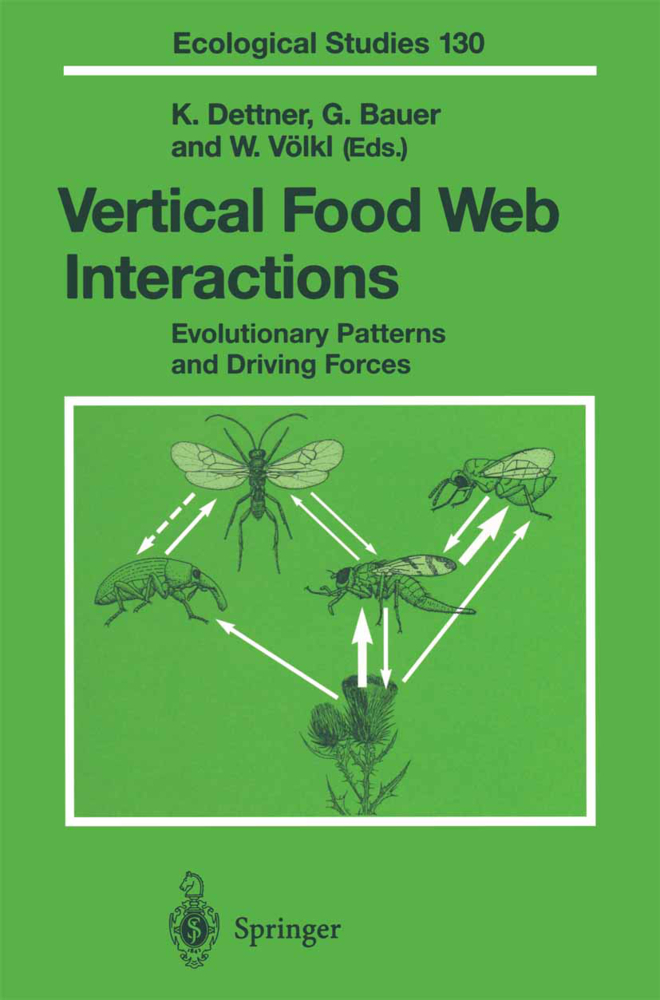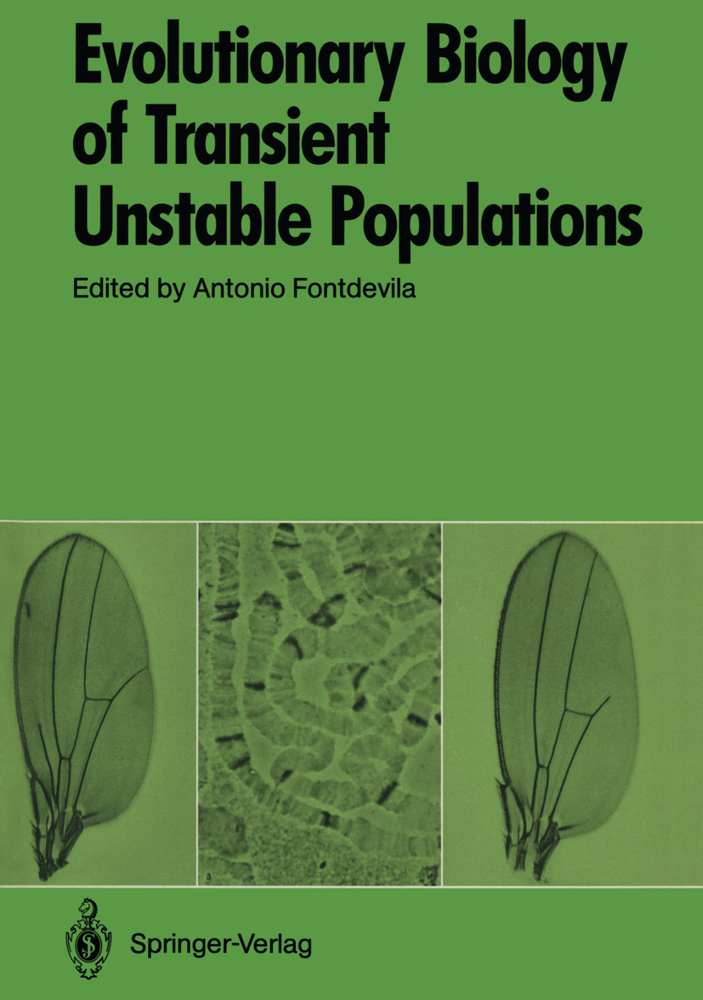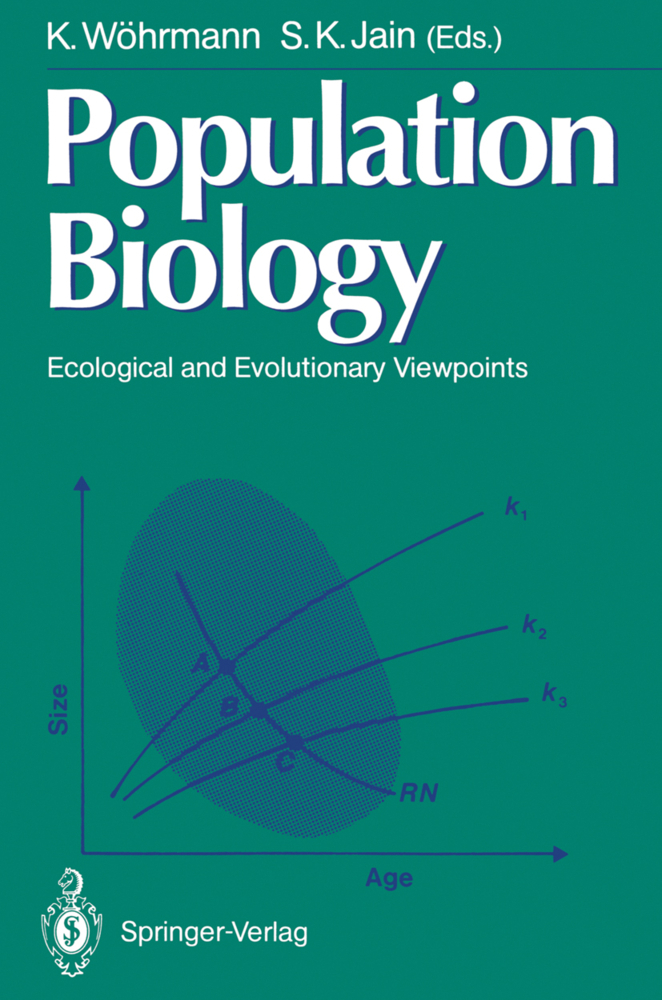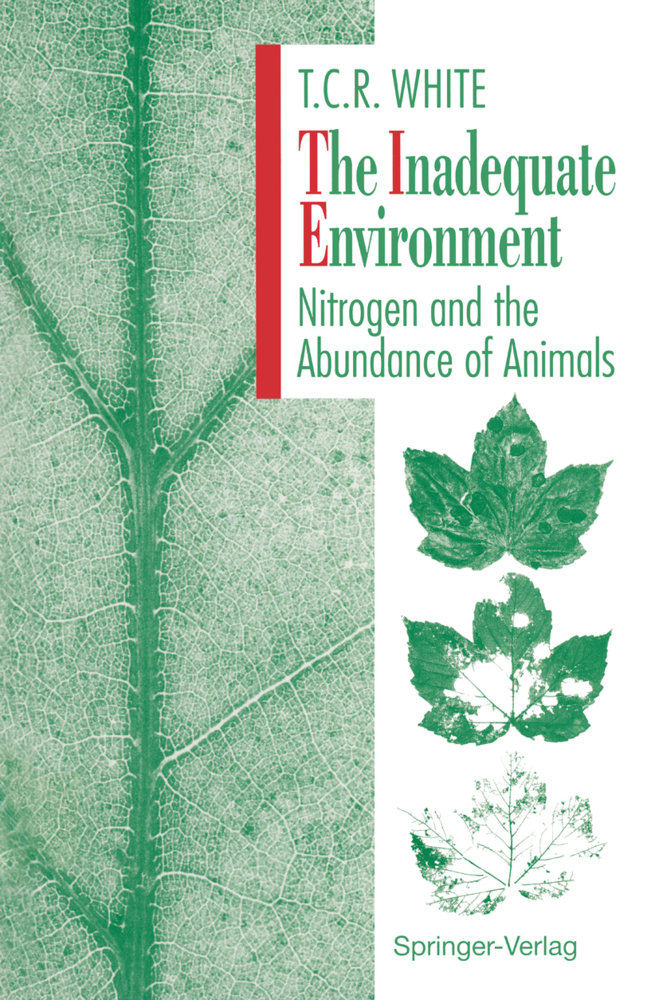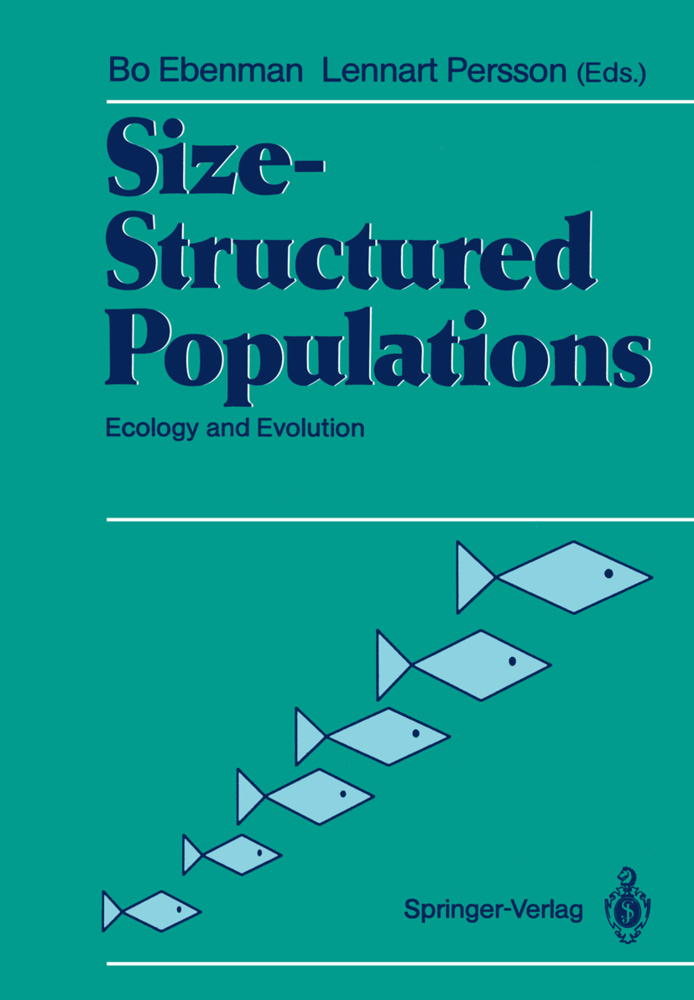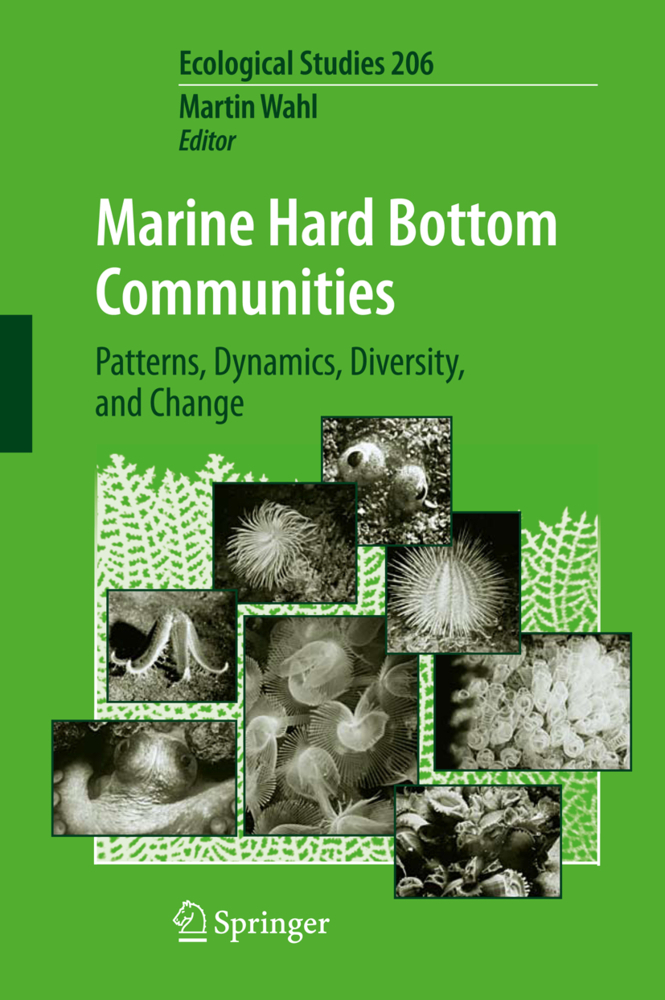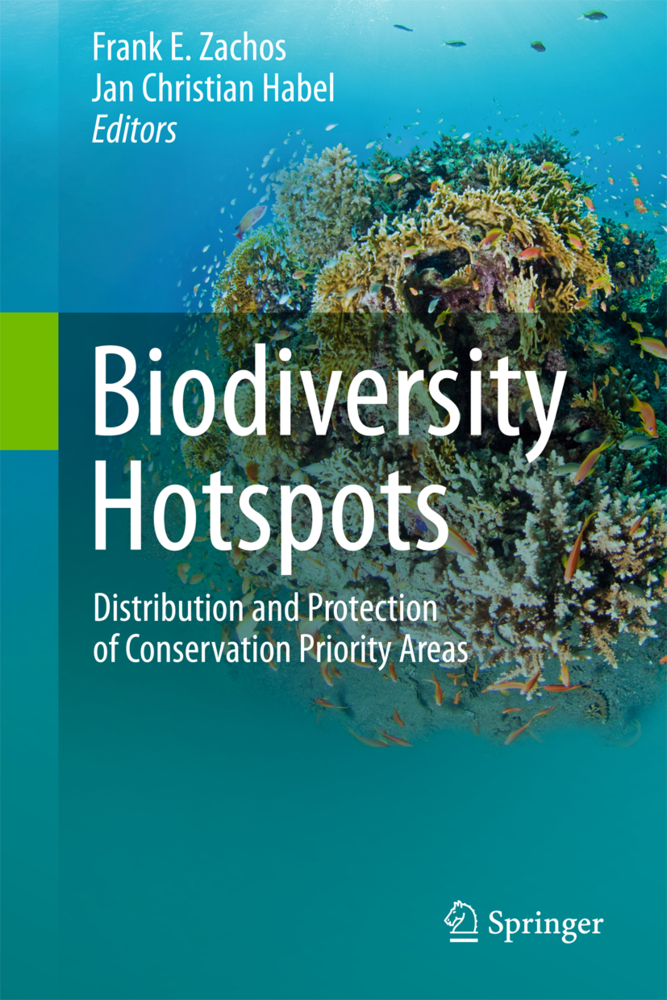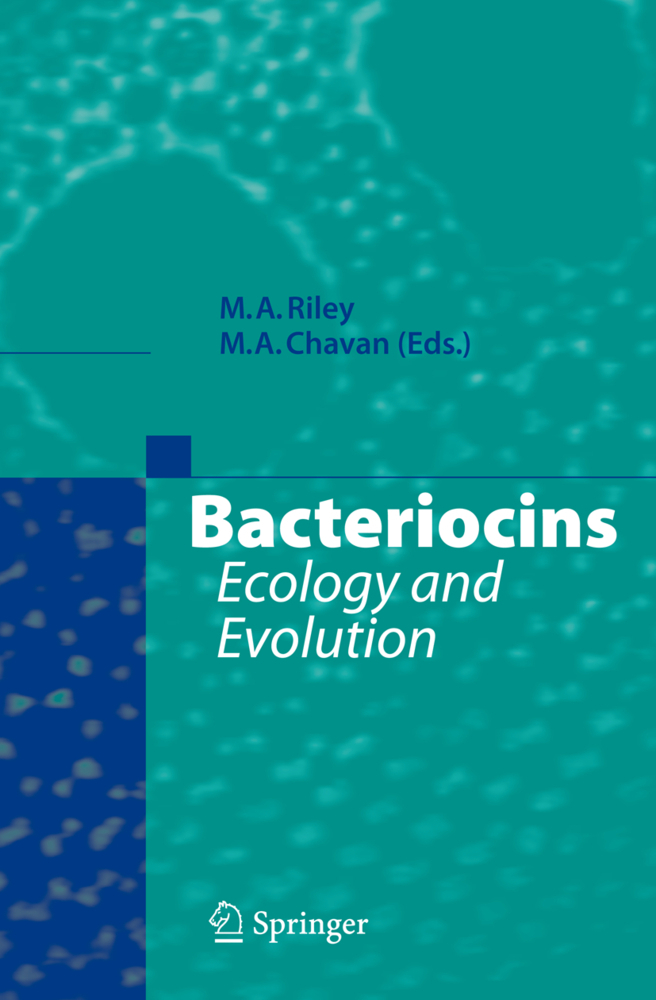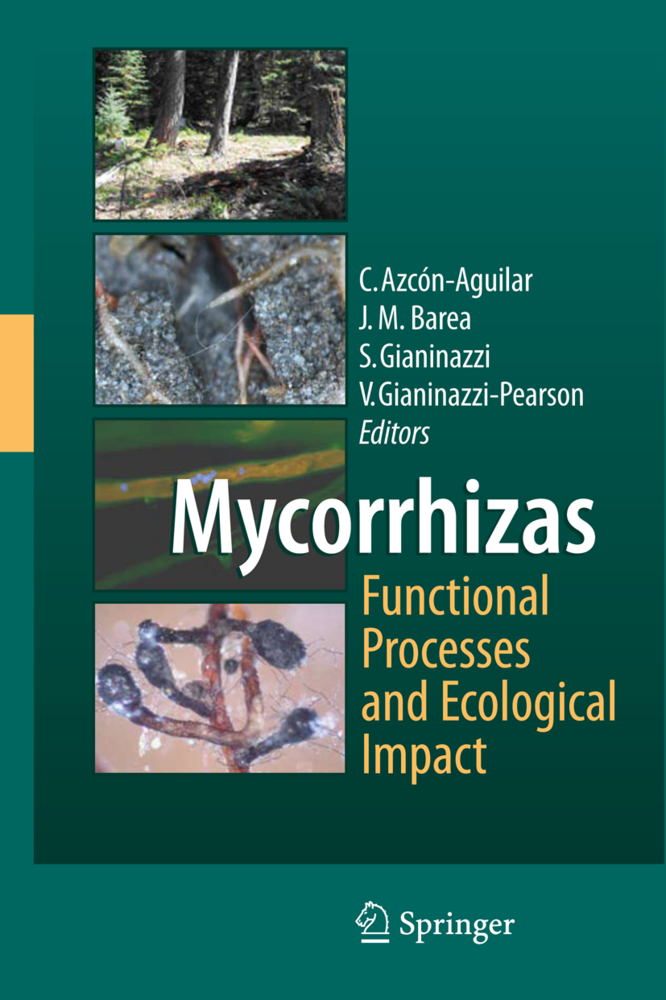Vertical Food Web Interactions
Evolutionary Patterns and Driving Forces
Vertical Food Web Interactions
Evolutionary Patterns and Driving Forces
In the past years, much work has been carried out on either life-history evolu tion or structure and function of food webs. However, most studies dealt with only one of these areas and often touched upon the other only marginally. In this volume, we try to synthesize aspects of both disciplines and will concen trate on how the interactions between organisms depend on their life-history strategies. Since this is a very comprehensive topic, this volume will focus on vertical interactions to remain within a clearly arranged field. We present some scenaria based on life-history variation of resource and consumer, and show how particular patterns of life-history combinations will lead to particular patterns in trophic relationships. We want to deal with the selective forces underlying these patterns: the degree of specificity of the consumers deter mines the dependence on its resource, and its adaptation to the spatial and temporal availability of the resource. In this respect, the spatial structure of the resource and its "quality" may play an important role. The impact of natural enemies is another important selective force which may influence the evolu tion of interactions between species and the structure of communities. Here, the acquirement of an enemy-free space may provide selective adavantages. The importance of the impact of enemies is also expressed by the development of numerous and sometimes very subtle defense strategies. This will be dem onstrated especially for various aspects of chemical ecology.
2 Host Race Formation in Tephritis conura: Determinants from Three Trophic Levels
3 Symphagy Among Florivorous Fruit Flies (Diptera: Tephritidae) in Southern California
4 Establishment of Urophora cardui (Diptera: Tephritidae) on Canada Thistle, Cirsium arvense (Asteraceae), and Colony Development in Relation to Habitat and Parasitoids in Canada
B Host-Parasite Interactions
5 Host Relationships at Reversed Generation Times: Margaritifera (Bivalvia) and Salmonids
6 The Community Structure of Ticks on Kudu, Tragelaphus strepsiceros, in the Eastern Cape Province of South Africa
7 The Epidemiology of Parasitic Diseases in Daphnia
C Aspects of Chemical Ecology in Different Food Chains
8 Inter- and Intraspecific Transfer of Toxic Insect Compound Cantharidin
9 Survival in a Hostile Environment. Evaluation of the Developmental Success of the Oligophagous Leaf Beetle Chrysomela vigintipunctata (Scop)
10 Ecdysteroids in Pycnogonids: Hormones and Interspecific Allelochemicals
D Phytophages and Their Enemies: Interactions Between Aphids and Their Predators and Parasitoids
11 Growth and Development in Parasitoid Wasps: Adaptation to Variable Host Resources
12 Patch Quality and Fitness in Predatory Ladybirds
13 Interactions Between Ants and Aphid Parasitoids: Patterns and Consequences for Resource Utilization
14 The Relative Importance of Host Plants, Natural Enemies and Ants in the Evolution of Life-History Characters in Aphids
E Community Organization and Diversity in Multitrophic Terrestrial Systems
15 Diversities of Aphidopha in Relationship to Local Dynamics of Some Host Alternating Aphid Species
16 Organization Patterns in a Tritrophic Plant-Insect System: Hemipteran Communities in Hedges and Forest Margins
17 Biodiversity in Three Trophic Levels of the Vineyard Agro-Ecosystem in Northern Switzerland
18 Landscape Dynamics, Plant Architecture and Demography, and the Response of Herbivores
F Synopsis
19 Evolutionary Patterns and Driving Forces in Vertical Food Web Interactions
Species Index.
A Plant-Insect Relationships: Life-History and Evolution of Tephritid Flies
1 The Sympatric Origin of Phytophagous Insects2 Host Race Formation in Tephritis conura: Determinants from Three Trophic Levels
3 Symphagy Among Florivorous Fruit Flies (Diptera: Tephritidae) in Southern California
4 Establishment of Urophora cardui (Diptera: Tephritidae) on Canada Thistle, Cirsium arvense (Asteraceae), and Colony Development in Relation to Habitat and Parasitoids in Canada
B Host-Parasite Interactions
5 Host Relationships at Reversed Generation Times: Margaritifera (Bivalvia) and Salmonids
6 The Community Structure of Ticks on Kudu, Tragelaphus strepsiceros, in the Eastern Cape Province of South Africa
7 The Epidemiology of Parasitic Diseases in Daphnia
C Aspects of Chemical Ecology in Different Food Chains
8 Inter- and Intraspecific Transfer of Toxic Insect Compound Cantharidin
9 Survival in a Hostile Environment. Evaluation of the Developmental Success of the Oligophagous Leaf Beetle Chrysomela vigintipunctata (Scop)
10 Ecdysteroids in Pycnogonids: Hormones and Interspecific Allelochemicals
D Phytophages and Their Enemies: Interactions Between Aphids and Their Predators and Parasitoids
11 Growth and Development in Parasitoid Wasps: Adaptation to Variable Host Resources
12 Patch Quality and Fitness in Predatory Ladybirds
13 Interactions Between Ants and Aphid Parasitoids: Patterns and Consequences for Resource Utilization
14 The Relative Importance of Host Plants, Natural Enemies and Ants in the Evolution of Life-History Characters in Aphids
E Community Organization and Diversity in Multitrophic Terrestrial Systems
15 Diversities of Aphidopha in Relationship to Local Dynamics of Some Host Alternating Aphid Species
16 Organization Patterns in a Tritrophic Plant-Insect System: Hemipteran Communities in Hedges and Forest Margins
17 Biodiversity in Three Trophic Levels of the Vineyard Agro-Ecosystem in Northern Switzerland
18 Landscape Dynamics, Plant Architecture and Demography, and the Response of Herbivores
F Synopsis
19 Evolutionary Patterns and Driving Forces in Vertical Food Web Interactions
Species Index.
Dettner, Konrad
Bauer, Gerhard
Völkl, Wolfgang
| ISBN | 978-3-642-64528-0 |
|---|---|
| Artikelnummer | 9783642645280 |
| Medientyp | Buch |
| Auflage | Softcover reprint of the original 1st ed. 1997 |
| Copyrightjahr | 2011 |
| Verlag | Springer, Berlin |
| Umfang | XXII, 390 Seiten |
| Abbildungen | XXII, 390 p. |
| Sprache | Englisch |

